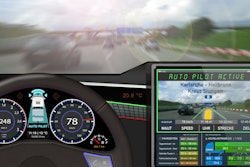
It’s the kind of news every supply chain manager dreads hearing—news of a hurricane forming in the Gulf of Mexico or Atlantic and it’s soon to make landfall. A myriad of thoughts inevitably come to mind. What about your organization? What about your customers? What about your logistics network? Do you reach for policy manuals and binders of continuity plans? Planning and creating a digital twin of your supply chain as part of an optimization tool is the key to worrying about the right kinds of things before a major storm.
What is a digital twin of your supply chain? How detailed should it be modeled? What factors should be built into the algorithm? How do you even start when the current model is outdated Excel workbooks?
A digital twin is a virtual representation of the supply chain. The purpose of creating a digital twin allows for quicker and more consistent analysis of factors affecting forecast demand, management of inventory and fulfillment of that demand with constrained supply. If you rely on disconnected spreadsheets and “gut feel,” you miss out on the power of artificial intelligence (AI) tools and the power of mining data for patterns and trends. You miss out on the ability to run scenarios and simulations to prepare ahead of time for contingencies. Optimization algorithms are coded to achieve various objectives -- maximize profit, minimize cost, fulfill the demand of key markets, etc. “Gut feel” alone cannot achieve the same caliber of results.
Customer demand and the unpredictability of storms
Can you predict the pattern of customers during normal times, much less a storm? Integrated supply chain applications create baseline models. Harness the power of historical transactions to use as a base. The history provides the seasonality needed to model the normal ebbs and flows of demand. History can then be weather adjusted to normalize weather events from the past. With the base, you don’t have to scramble to assemble data. Utilize time wisely to analyze past trends and patterns of similar weather events. Bottom line, those who don’t learn from the past are doomed to repeat it.
Logistics are bad enough on a good day, much less during a storm
When a large storm is looming, much work is needed to be done rather than guessing on logistical options available for connecting supply points and inventory or customers. The importance of a digital twin and maintaining the modeling as your supply chain evolves is that you don’t have to scramble to assemble it every time you run scenarios. Rather than worry about what routes and lanes are selected and fulfilled by which modes of transport and carriers, study the existing digital twin and then update the logistics to be in keeping with scenarios. If there is a route that cannot be run due to the weather, temporarily close it so that the optimization algorithm will re-route around it.
How reliable is your inventory?
Scenarios and modeling during a storm or other weather-driven situations depend on knowing your proper levels of inventory. With knowledge of inventory, decisions can be made on replenishment strategies and pending movements in customer demand. Without knowing proper levels of inventory, the supply chain is hamstrung based on impartial information. The company runs the risk of running a terminal out or creating situations of unfulfilled demand. Pending the criticality of the products, this can mean bad PR in the news if it’s pervasive across an area. With proper inventory knowledge and modeling, planning can be done ahead of time to help mitigate the ill effects of catastrophic weather events.
Micromanaging but missing the forest through the trees
The tendency during a critical weather event is to myopically focus on the area or locale at the expense of others. This problem comes from the interconnectedness of the supply chain. Sure, a company can divert loads and inventory from one area to another by justifying that it’ll be okay in the short term. That said, where supply chains operate on small buffers and the constant movement of products, the short-term dislocation can be a major disruption that can take months from which to recover.
Don’t lose the perspective of the entire health of the supply chain for focusing on a small event. The digital twin and optimization can help ensure that trade-offs are evaluated ahead of time. Only then will a company manage during a storm and ride it out successfully, instead of being victimized by the supply chain.




















